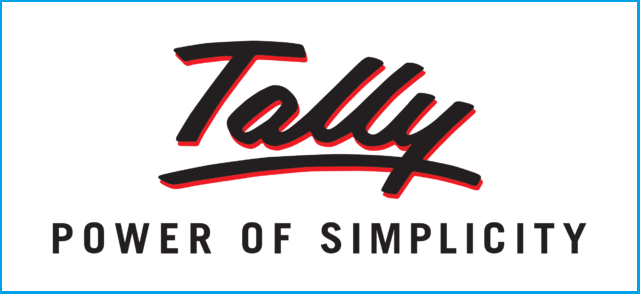What is Tally: Learn about the accounting software that has it all
Accounting is a core part of any office.

Besides keeping a track of your company’s finances, it helps you see the financial growth and make strategic decisions. Traditionally, this was done manually wherein an accountant used notebooks to maintain a balance sheet and calculate income and expenditure. However, manual accounting could get taxing. That’s when Tally Solutions Pvt. Ltd. came into the picture. It developed a computerized accounting software, Tally, and revolutionized the business accounting landscape.
Developed in 1986, Tally quickly became the go-to accounting software. This popularity remains unparalleled even today with a user base of 2 million businesses worldwide.
In this article, we will cover the following aspects of this software:
1. Why is Tally used?
2. What are the different versions of Tally?
3. Why should you learn Tally?
4. What are the careers that you can explore after learning Tally?
Why is Tally used?
To begin with, let’s find out what are the features of Tally that makes it an industry leader:
1. Lightning-fast – One of the most important reasons why Tally became the go-to choice for accountants and auditors is because of its swiftness. Once you enter ledgers and vouchers in Tally, it can generate balance sheets and profit and loss reports within a few seconds. These real-time reports help businesses in making crucial decisions faster.
2. Error-free reporting – The calculations are automated in Tally, which reduces the number of errors that may be made during manual accounting.
3. Versatile – Tally can be used many tasks such as accounting, billing, inventory management, tax management, payroll, etc.
4. Easy-to-use – The tagline of Tally is ‘Power of simplicity’. It has a simple, user-friendly interface that is easy to use and makes accounting accessible even for learners from a non-commerce academic background.
 Source: Wikimedia Commons
Source: Wikimedia Commons
5. Flexibility – Tally allows you to switch between multiple reports, companies, and different branches of the same company.
6. Safe and sound – Data entered in Tally is encrypted cannot be easily tampered with or changed. Moreover, it has different security controls which allow you to manage access to sensitive data.
7. Remote access – Tally users can access their accounts from anywhere. All they need is a unique user id and password.
8. Multilingual support – Tally supports 13 languages including Indian languages such as Gujarati, Marathi, Hindi, Telugu, and so on. This allows users to view and print reports in a language that they are comfortable with. This shows how Tally has adapted to a complex, Indian business environment.
9. Data forecasting – Based on your data from last year, Tally can help you in preparing a budget for the coming year. It can also help you in seeing patterns in current data.
10. GST compliance – The introduction of GST was a massive change in the taxation system in India. Tally was able to bring out a product that made the transition smoother for businesses.
11. Cost-effective – The educational version of Tally is free whereas the licensed one can be accessed for a lifetime. Any new updates, such as GST, can be availed through an affordable subscription. Additionally, it reduces the paperwork associated with manual accounting.
The above-mentioned features of Tally were gradually added to different versions of Tally to make it the product it is today.
What are the different versions of Tally?
There exist more versions of Tally than the Batman movies over the years. They can be majorly divided into the following ones:
1. Tally 4.5 – The first version of Tally was a DOS-based application that computerized basic accounting needs.
2. Tally 5.4 – This version offered a graphic user interface for Windows. It also added additional features such as inventory management and invoicing.
3. Tally 6.3 – The VAT feature became a part of this version. It was also designed to protect it against piracy.
4. Tally 7.2 – This introduced the tax compliance feature in Tally such as TDS, TCS, and service tax.
5. Tally 9.0 – This version included multilingual support and payroll features.
6. Tally ERP9 – This stands for Tally Enterprise Resource Planning and has been majorly created for small and mid-sized companies. It has more rigorous security, remote access, banking transactions support, etc.
7. Tally Prime – This is the latest version of Tally which has a new interface and is faster to use.
With frequent updates and innovations, Tally has continued to spearhead the accounting software market in India.
Whoa, Tally seems to be a top-notch product. But why should I learn Tally?
1. Learn the ins and outs of finance management
Learning Tally can help you learn different finance-related concepts such as debit and credit, cashbook, trial balance, receipt payment, income and expenditure, and balance sheet. Tally can help you pick up on all these concepts easily as it can be used by anyone from a beginner to an expert.
2. Explore work opportunities across different industries
Everybody needs help with their finances, be it an engineering company or an animation one. Once you have learned Tally, you can match your interest with your expertise.
3. Improve your analytical skills
With Tally, you can generate financial reports with the click of a button. This leaves you with ample time to analyse the transactions which can help you in analysing accounting practices. You can analyse different reports to come with a budget.
Can learning Tally help me in my career?
With the knowledge of Tally under your belt, you can explore the following Tally related jobs:
1. Accountant – As an accountant, you will be responsible for documenting and managing all financial transactions, creating financial statements, preparing tax returns, forecasting a budget, etc.
2. Audit assistant – This is an entry-level job wherein you will work with a senior auditor to ensure that the accounting procedures are adhering to the norms set down by the company and country. Additionally, you can be responsible for analysing the audit reports.
3. Bookkeeping – As a bookkeeper, you will be tasked with recording and organising daily financial transactions of the business. This includes all the income and expenses that a company makes on a day-to-day basis.
4. Faculty – If you want to teach others how to harness the power of Tally, then you can become a Tally trainer.
This was a glimpse into the dynamic world of Tally. If you want to get a more in-depth understanding, then check out Internshala’s Tally course. What’s more, you can even get a 10% off if you use the coupon code BLOG10.
Image credits: https://www.cheatsheet.com/



